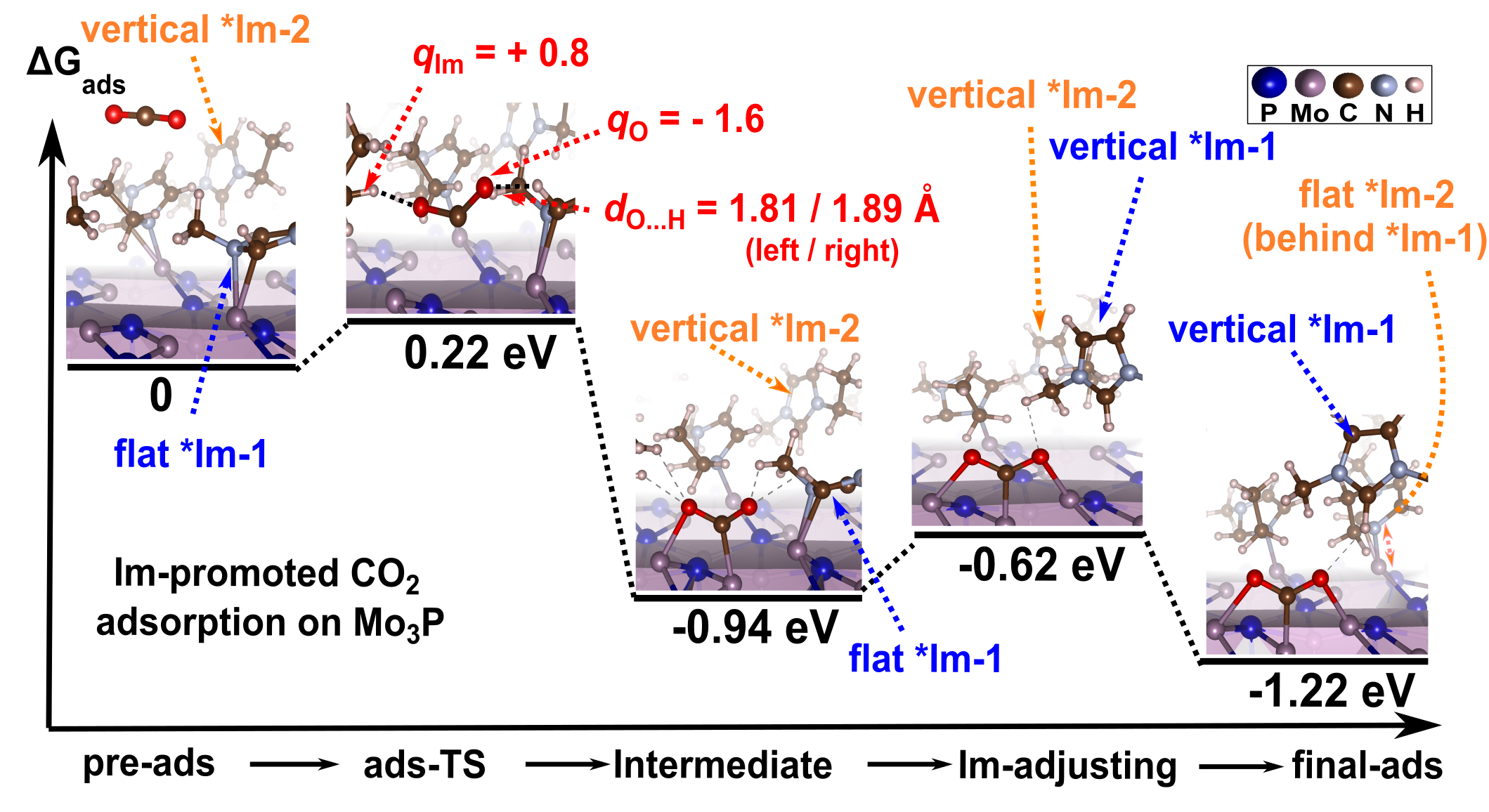CO2 Conversion
The issue of carbon neutral has been increasing more and more attentions for a green and sustainable environment. However, the inertness of CO2 challenges the effecient conversion to other fuel gases and chemicals for recycling in our daily industries and lives. Through our efforts, we found the surface coating techniques will greatly increase the efficiency of trimolybdenum phosphides (Mo3P) toward electrochemical CO2 reduction reactions (CO2RR). The decorated imidazole-functionalized Mo3P (ImF-Mo3P) surface directionally convert CO2 to propane (high energy-density fuel gas) with a high Faradic efficiency of 91.4%. However, the pristine Mo3P appears to be a mediocre CO2RR catalyst, producing significant CO and H2 as major products. The *Im layer is effective to increase the electronic conductivity of solid-state catalyst, meanwhile it strengthens the *CO2 and *CO adsorption on the catalysts by providing columbic force and hydrogen bonds to form ultimate propane products. Through designing such a hybrid catalyst with ionic liquids, we open new avenues to find more achievable catalysts for CO2RR.

Keywords: CO2RR; Ionic Liquid; Hybrid-phase Catalysts; Computational Electrochemistry
Publications:
- Mohammadreza Esmaeilirad#, Zhen Jiang#, Ahmad M. Harzandi, Alireza Kondori, Mahmoud Tamadoni Saray, Carlo U. Segre, Reza Shahbazian-Yassar, Andrew M. Rappe, Mohammad Asadi Nat. Energy 8, 891-900 (2023) (#: equal contribution)
